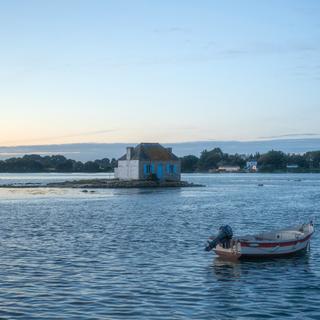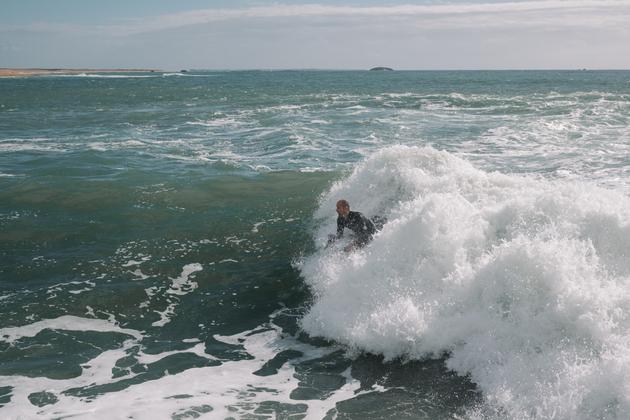


Le Monde's top 10 destinations | #5 Enchanting Etel
FeatureWhere to travel in 2024? This year, Le Monde answers that question with 10 travel picks accessible by train from France. Discover two travel guides per week throughout December. Number 5: Brittany's Etel.
The silence is warm and tranquil, barely interrupted by the gentle breeze and the chirping sparrows. At the end of the Pointe du Verdon, one of the long strips of land that runs into the Etel River, the panoramic view of the oyster pools and anchored fishing boat gives a feeling of tranquillity. All around, the Atlantic Ocean and land are intertwined. A pointed bell tower signals a village, tall trees partially hide white villas with slate roofs, broom branches and a beached buoy burst forth in the same yellow hue. A barge loaded with oysters moves slowly along a channel lined with wooden posts.
A few hours later, after pedaling some 20 kilometers, we find ourselves in almost the same place, but on the other side of the water, on the Locoal peninsula this time. Meanwhile, the tide has risen, the waves are licking the rocks and pushing the seaweed back onto a stretch of beach, and boats that had been sleeping on the shore are now floating. The horizon has narrowed; the sea has taken over.
This spectacle, somewhat the same and yet somehow different, can also be admired from the Pointe de Kerantreh, where the heavy scent of the sea air mingles with that of the pine trees. Or from the Chapelle Saint-Guillaume, with its solid quoins, whitewashed walls and blue door, next to which, on the grass, lie overturned multicolored boats. From one side to the other, we tried to make out the opposite shore. Were we on this shore, under this majestic cedar, or near an islet now submerged? Even the locals, binoculars in hand, don't always recognize it.

The shores of the Etel River, between Auray and Lorient (Morbihan), create an unexpected ensemble, "like the Gulf of Morbihan, but smaller, with fewer tourists and fewer boats," said Carole Damerose, who settled in Locoal two years ago with her husband, Etienne, to farm oysters. Geographers call this river valley, fed by several streams and invaded twice a day by the tide, a "ria." In northern Finistère, it's called an aber. While the name "Ria d'Etel" has conquered the tourism sector, old-timers can't imagine calling it anything other than a rivière.
The location is enchanting. All around the maritime expanse, the light and atmosphere change constantly: rows of mulberry hedges, horse-filled meadows, heaths covered in yellow-green lichens and fragrant pine groves that captivate while pedaling. In Landévant, the Demi-Ville mill, whose wheel follows the ebb and flow of the current, marks the course of a tiny coastal river.
Amid contemporary houses, traditional hamlets remind us that here, stone means granite, with unevenly sized blocks stacked on top of each other. They were used to build solid longères (long, narrow dwellings found in northern France) with lintels decorated with carved accolades, wells and wash-houses, or sturdy chapels dedicated to some Breton saint. The multiple small roads, almost deserted, meander and continually split. Some paths lead to dead ends. It's advisable to have a good map.
You have 60% of this article left to read. The rest is for subscribers only.
